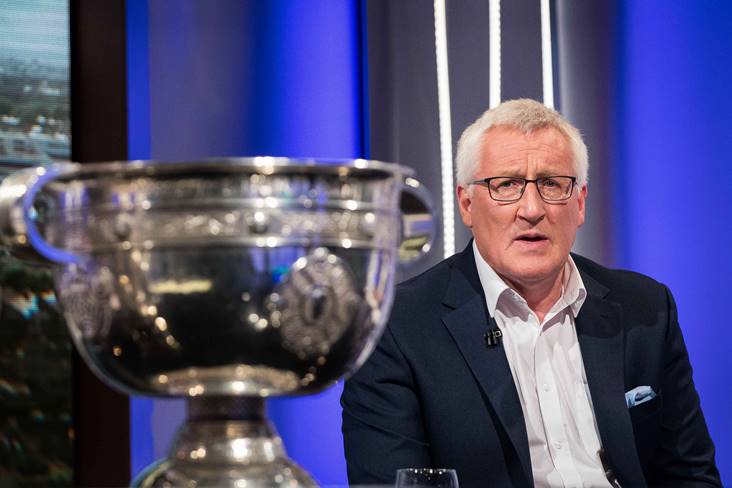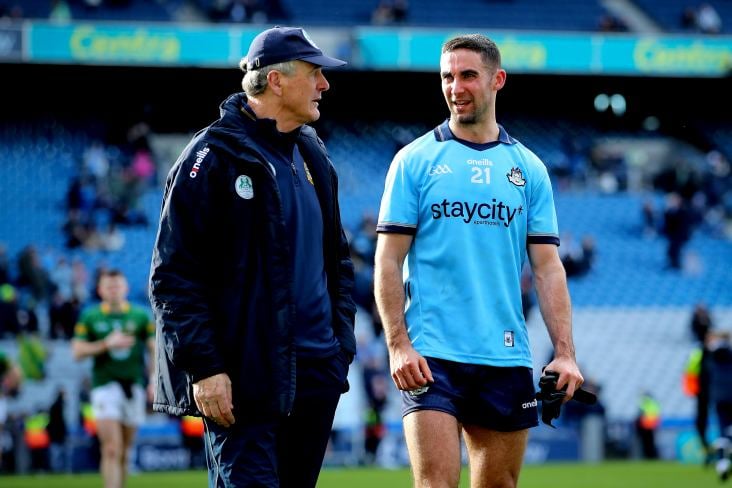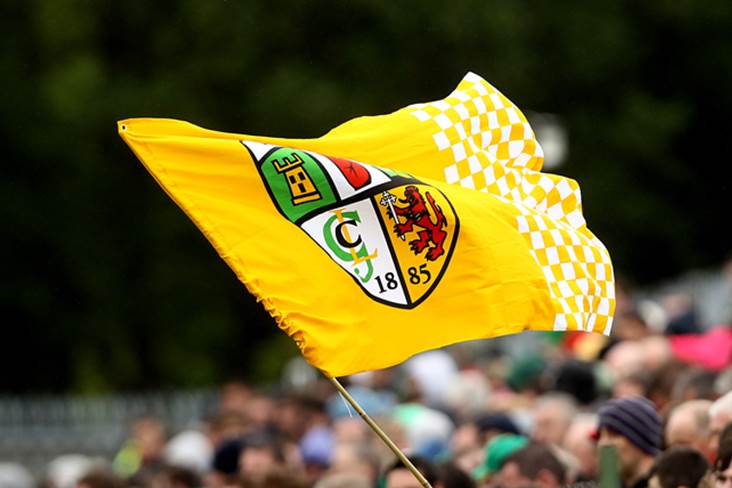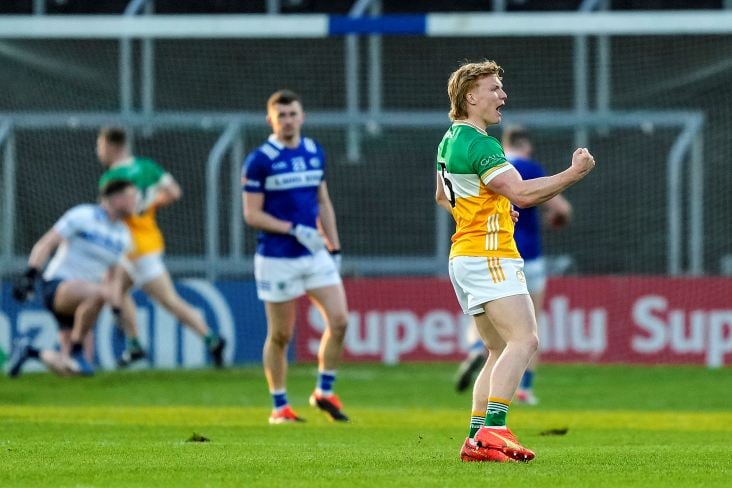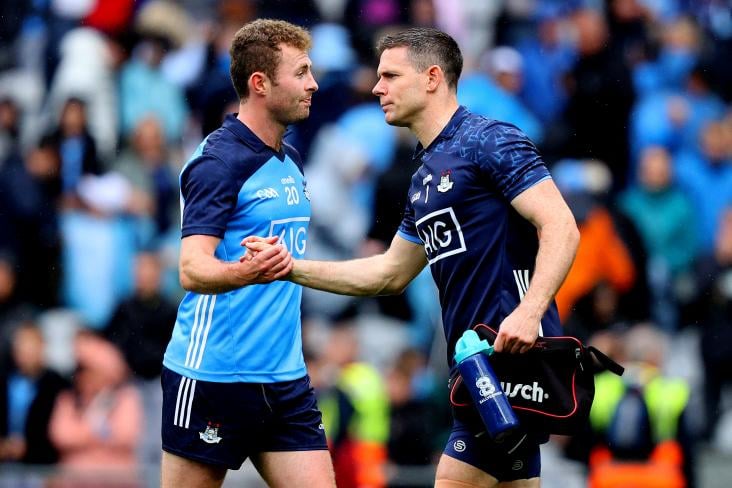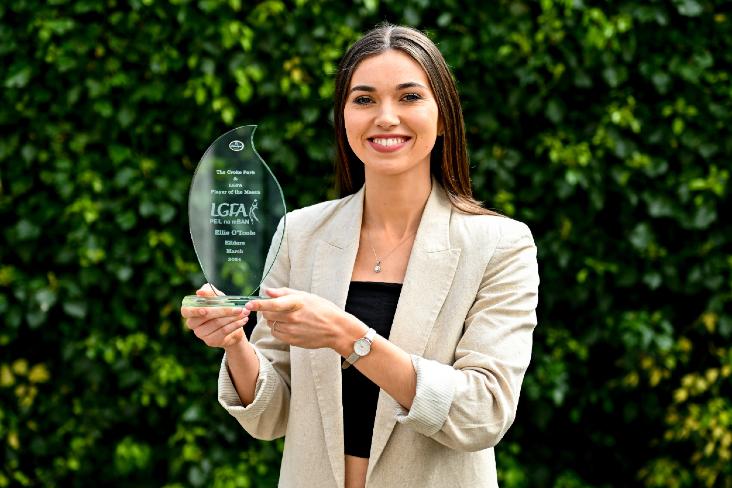GAA publish guide for return of spectators to games
July 10, 2020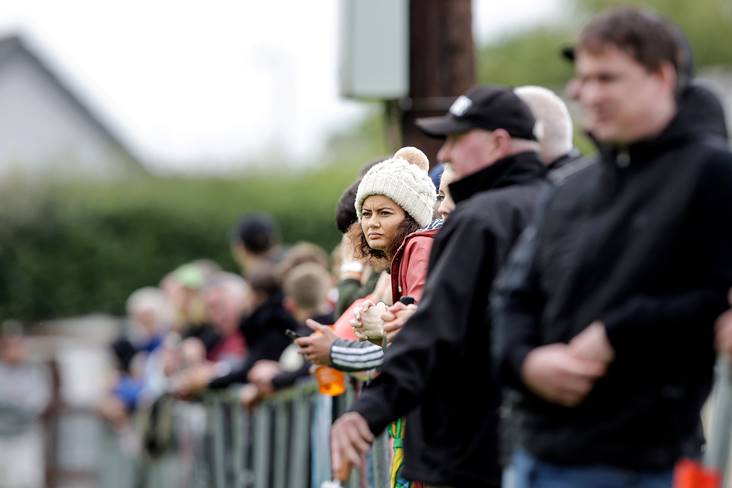
Spectators look on. ©INPHO/Laszlo Geczo.
The GAA have offered guidance for the return of spectators to games next week in line with Government advice on Covid-19.
It follows the release of the new match day regulations and the purpose of these guidelines is to assist clubs and counties in delivering a safe environment for spectators ahead of the return to competitive action on Friday, 17 July.
The comprehensive guide covers many important aspects such as providing key information to the public, capacity restrictions, social distancing, contact tracing, pre-paid ticketing and the use of sanitation and toilet facilities at GAA grounds in the 32 counties.
From 20 July, crowds of up to 500 people will be allowed to attend GAA games - including players, backroom staff, officials and spectators - in the 26 counties. But spectators are not yet permitted to attend GAA games in the six counties.
All patrons should bring their own hand sanitiser to games and face coverings are "strongly advised" for those over the age of 13. They should also keep their own record of contacts for potential tracing and are encouraged to download the new Covid Tracker App.
GAA statement on return of spectators to games:
Purpose:
To advise county boards and clubs on key Covid-19 control measures required to operate safe events for spectators in line with Government Public Health advice. In the absence of specific Government advice on spectators and mass gatherings we must endeavour to take a practical, responsible, and common- sense approach to managing risk whilst observing existing regulations. It is recommended that these guidelines are adopted by all GAA clubs in 32 counties at this time.
Communication:
It is essential that clear and concise information is made available to spectators before they consider attending any club games. This strategy should involve all available means of communication from national to local level. Use of official GAA websites, social media platforms, information on tickets and use of signage outside grounds are just some of the ways that key information can be disseminated to spectators attending games. Important areas to address include:
*Spectators should be aware that all the risks posed from Covid-19 cannot be eliminated, including attending GAA games but that essential control measures have been put in place to reduce risks for members.
*Spectators must not attend games if they display any symptoms of Covid-19 and instead should phone their GP and follow public health advice
*Individuals that are considered high risk or are in close contact with others who are considered high risk should not attend games (click here)
*Individuals must be informed that much of the responsibility for managing Covid-19 risk remains with themselves particularly in relation to social distancing, wearing of face coverings and sanitation
*All spectators should be encouraged to bring their own hand sanitiser
*The use of face coverings is strongly advised for all patrons over the age of 13
*Spectators must not enter the field of play at any time including pre-match, at half-time and other intervals and after the final whistle or at end-of-match presentations
*Spectators should be advised to keep their own record of contacts at a match for potential tracing purposes
*All spectators should be encouraged to download the HSE tracing app (click here)
Capacity:
*Commencing 20th July 2020 in accordance with the Government of Ireland Revised Roadmap, a maximum gathering of 500 persons is permitted in the 26 Counties. This will therefore restrict the total capacity at GAA grounds to 500 until further notice
*The figure of 500 includes all present at the ground, including staff, volunteers, players, backroom staff, media, contractors, and spectators of all ages
*In the 6 Counties as of 11th July games are permitted without spectators with guidance due to be issued in advance of the resumption of competition on 17th July 2020.
*The number in attendance should be recorded by the club hosting the match to ensure that government guidance has been fully complied with. A designated person should be appointed to carry out this task
*Every ground should be risk assessed to ensure that it is capable of hosting a gathering of up to 500 people in line with social distancing measures. If not, consider an alternative venue or reduce the number of tickets allocated to reflect the capacity of the ground to maintain spectator social distancing
*If a ground cannot be secured in such a way as to prevent surplus attendees (e.g. where a match is to be played in a public park, local authority pitch or an open space) and where large crowds/crowds of 200 or more can be reasonably anticipated an alternative venue should be considered
*Consideration should be given to operating single header fixtures only where existing control measures do not adequately mitigate the risks involved in running two or more games including management of numbers and movement of spectators
*The use of a manual clicker device is highly recommended as a means of counting all personnel entering the ground
Social Distancing:
*The current public health guidance advises a social distance of 2m be maintained between people. Further government guidance may change and the GAA’s assessment method may change as a result.
*Where small groups of people are attending games, members of these should wherever possible be from the same household
*Individuals and small groups should remain insofar as possible in the same area for the duration of the game, remain 2m apart and avoid intermingling with other individuals or groups
*Signage should be in place to remind spectators to practice and maintain social distancing
*Consideration should be given to the ingress and egress of patrons particularly when there is more than one game taking place. Where possible use separate entrance and exit points to reduce crossflow of spectators and help maintain safe distancing or if entry/exit point is the same divide with a barrier to create a two-way system
*Ensure there is adequate space at the entry point for social distance queueing with adequate signage, ground markings and stewarding in place
*Before, between and after games it is essential that spectators do not congregate in groups in the vicinity of the grounds as social distancing and contact tracing measures will be compromised and the potential risk of transmission higher
Contact Tracing:
*All practical measures should be taken to inform spectators attending to restrict contact with individuals and groups outside their own household once inside the ground e.g. through public announcements, signage and stewards.
*Ground management will be responsible for the contact tracing records of staff, volunteers, players and officials. Ground management are not responsible for the contract tracing records of spectators
*All third-party contractors and media must have their own contact tracing measures in place and avoid any close contact with spectators where possible
Ticketing:
*For games with an expected attendance of 200 or more it is recommended that entry should be by pre-paid ticket only (to include spectators and non-spectators and complementary)
*Tickets must be purchased in advance of the game online or at a location away from the ground entry point if on the day sales are necessary
*The ticket allocation for spectators must be determined from the maximum capacity of 500 minus the expected number of players, support staff, ground staff and volunteers, officials and all others present in a non-spectating capacity
*Key information should be available to prospective spectators before they purchase a ticket to ensure they understand the specific Covid-19 risks involved in match attendance
Sanitation and Toilets:
*Grounds must ensure that there are adequate male and female toilet facilities available for the expected attendance
*Ensure toilets are well ventilated and there is a robust documented cleaning regime in place
*Hand sanitiser stations should be located at entry points and at other key touchpoint areas where handwashing facilities are not available
Ground Staff:
*All players, officials, staff and volunteers must have completed GAA questionnaire and online training
*Clubs should designate a competent individual to ensure there is compliance with all relevant Covid-19 guidance (someone who can dedicate sufficient time to the role)
*Appropriate stewarding arrangements (based on risk assessment) should be put in place
Medical Protocols:
*Should any patron present to staff or stewards with any symptoms of Covid-19 either before entering or whilst in the ground they should be advised to go home immediately and contact their GP
*In the unlikely event that a patron presenting with symptoms is not in a position to go home, grounds should ensure there is a room available for that person to isolate whilst waiting on the HSE/Department of Health and Social Services to respond
Ancillary Activity:
*Consideration should only be given to the operation of catering, merchandising and programme concessions if suitable controls are in place to minimise the risk to staff and spectators as per Covid-19 specific risk assessment
*For matches that are broadcast on TV or online ensure that TV crews complete their own site specific Covid-19 risk assessment
Tweet
